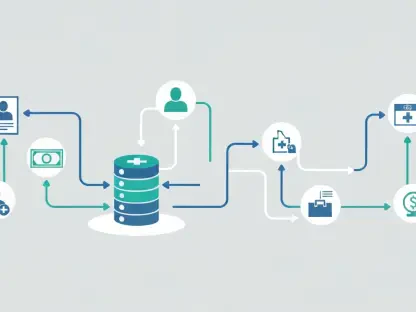The insolvency software market is poised for significant growth, driven by a surge in bankruptcy filings, regulatory compliance needs, and technological advancements. A recent study by Allied Market Research forecasts the market to reach $4.5 billion by 2032, expanding at a compound annual growth rate (CAGR) of 11.9% from 2024 to 2032. This article delves into the key factors propelling this market, the role of technological innovations, and the market dynamics across different segments and regions.
Key Drivers of Market Growth
Surge in Bankruptcy Filings
One of the primary drivers of the insolvency software market is the increasing number of bankruptcy filings globally. As businesses face economic uncertainties, the demand for efficient software solutions to manage and streamline insolvency processes has risen sharply. Industries affected by financial instability are seeking robust tools to navigate through insolvency procedures with minimal disruption. This rising need underscores the importance of effective insolvency software capable of handling various complexities associated with bankruptcy proceedings, enhancing operational efficiency, and reducing the time and cost involved in these processes.
The economic fallout from the global pandemic has further intensified the need for sophisticated insolvency management tools. Companies, regardless of their size, have been forced to reevaluate their financial health, often leading to increased bankruptcy declarations. Consequently, insolvency software solutions become vital assets, enabling businesses to negotiate financial distress with precision and resilience. The software’s ability to provide real-time data analysis and streamline documentation processes ensures that businesses remain compliant with legal standards and can manage their resources effectively during periods of financial difficulty.
Regulatory Compliance
Insolvency software has become essential for enterprises to stay compliant with complex and evolving financial regulations. Regulatory frameworks vary across regions and industries, making it imperative for businesses to adopt specialized software that ensures adherence to legal requirements. Non-compliance can result in hefty fines and legal challenges, driving the adoption of advanced insolvency management solutions. These solutions help companies keep up with regulatory changes, automate compliance tasks, and maintain comprehensive audit trails, which are indispensable for legal defense and financial accuracy.
The dynamic nature of regulatory environments, especially in the financial sector, means that companies must be ever-vigilant and prepared to adapt. Insolvency software offers the necessary tools to manage these regulatory demands efficiently. By automating compliance-related tasks, the software reduces the risk of human error and ensures that enterprises meet all regulatory requirements in a timely manner. This not only helps in avoiding legal penalties but also builds trust with stakeholders, including investors and regulatory bodies, demonstrating the company’s commitment to legal and financial integrity.
Technological Advancements and Their Impact
Integration of AI and Automation
Technological advancements, particularly in AI and automation, are revolutionizing the insolvency software market. AI-driven solutions offer predictive analytics and real-time monitoring, enhancing decision-making during insolvency proceedings. Automation streamlines administrative tasks, reducing the burden on insolvency professionals and increasing overall process efficiency. These technologies facilitate more accurate financial forecasting, risk assessment, and resource allocation, which are crucial for effective insolvency management. The integration of AI systems also enables the early detection of financial distress, allowing companies to take proactive measures to mitigate risks.
Additionally, AI and automation play a critical role in improving the user experience by simplifying complex processes and providing intuitive interfaces. The use of machine learning algorithms in these software solutions can identify patterns and trends, offering insights that were previously difficult to obtain. This capability allows for more informed decision-making and strategic planning, thereby improving the chances of successful outcomes in insolvency proceedings. Moreover, automation reduces manual intervention, leading to quicker resolutions and cost savings, which are particularly beneficial for financially strained businesses.
Customization and Support Services
There is an increasing demand for customization, technical support, and maintenance services in the insolvency software market. Customized solutions allow businesses to tailor software functionalities to their specific needs, ensuring long-term effectiveness. Support services help in maintaining seamless operations, addressing any technical issues promptly, and keeping the software up-to-date with regulatory changes. Customization is particularly important for industries with unique requirements, enabling the software to function in alignment with the specific challenges and workflows of the business.
Support services also play a vital role in the successful implementation and ongoing operation of insolvency software. These services ensure that any issues encountered are resolved swiftly, minimizing downtime and operational disruptions. Regular software updates provided through support services keep the system in line with current industry standards and regulatory mandates, ensuring continuous compliance and efficiency. This focus on customization and support not only enhances the effectiveness of the software but also contributes to higher user satisfaction and retention rates.
Market Segmentation Insights
Component Types: Solutions vs. Services
The insolvency software market can be segmented into solutions and services. The solutions segment, which includes comprehensive features for streamlining insolvency processes, currently holds the highest market share. These solutions offer end-to-end features that encompass various aspects of insolvency management, from document handling to financial analysis and compliance tracking. The robust functionalities of these software solutions make them indispensable for businesses navigating complex insolvency procedures, driving their widespread adoption across various industries.
However, the services segment is expected to grow rapidly due to the rising need for support and customization. As businesses increasingly rely on sophisticated software for insolvency management, the demand for services that provide technical support, training, and customization solutions is also on the rise. This segment includes not only the initial deployment of software solutions but also ongoing maintenance, updates, and technical support that ensure the software remains functional and up-to-date. The growth in this segment underscores the importance of comprehensive service offerings that enhance the overall effectiveness and reliability of insolvency software solutions.
Enterprise Size: Large Enterprises vs. SMEs
Large enterprises dominate the market due to their complex financial operations and substantial resources. These organizations are better equipped to invest in advanced insolvency management solutions. They require sophisticated tools to handle extensive financial data, ensure compliance with global regulatory standards, and manage intricate insolvency processes efficiently. The significant financial and operational scale of large enterprises drives their need for high-performance software solutions that offer robust features, automation, and real-time data analysis capabilities.
Conversely, SMEs are projected to be the fastest-growing segment, driven by increasing bankruptcy rates and the need for cost-effective and efficient software solutions. SMEs often face financial constraints and operational challenges that make them more vulnerable to economic fluctuations. As a result, they are increasingly turning to insolvency software to manage financial distress, streamline operations, and ensure compliance. The affordability and scalability of modern insolvency software solutions make them accessible to SMEs, allowing these businesses to benefit from advanced functionalities without incurring prohibitive costs. This shift is anticipated to drive significant growth in the SME segment over the coming years.
Application and Industry Verticals
Document Management
Within the application segment, document management holds a leading position. This is due to its critical role in automating and managing administrative processes during insolvency. Efficient document management ensures that all necessary paperwork is organized, easily accessible, and compliant with legal standards, which is vital for smooth insolvency proceedings. The ability to automate document handling reduces manual input, minimizes errors, and accelerates the overall insolvency process, making document management software an essential tool for insolvency professionals.
Document management systems are designed to handle vast amounts of data, providing secure storage, quick retrieval, and seamless sharing of documents. These systems support compliance by maintaining accurate records and generating audit trails, which are essential for legal verification and transparency. The integration of advanced features such as optical character recognition (OCR) and machine learning further enhances the capability of these systems, allowing for more efficient data processing and management. As the importance of efficient document management continues to grow, this segment is expected to maintain its leading position in the insolvency software market.
Financial Transaction Management
The financial transaction management segment is forecasted to grow the fastest. This growth is fueled by the need for real-time financial risk monitoring and the optimization of funds during insolvency processes. Advanced software solutions in this area help businesses manage transactions accurately and transparently, mitigating financial risks. These solutions provide features such as automated transaction tracking, real-time reporting, and predictive analytics, enabling businesses to make informed decisions and optimize their financial strategies during insolvency.
Effective financial transaction management is crucial for maintaining financial stability and transparency during insolvency proceedings. The ability to track and report transactions in real time allows organizations to monitor cash flow, identify potential issues early, and take proactive measures to address financial risks. This functionality is particularly important for industries with complex financial operations, where the timely management of transactions can significantly impact the outcome of insolvency proceedings. As businesses increasingly recognize the importance of real-time financial transaction management, this segment is expected to experience substantial growth.
BFSI Sector Dominance
Among industry verticals, the BFSI (Banking, Financial Services, and Insurance) sector holds the highest market share and is expected to maintain its growth rate. The frequent insolvency cases in this sector, coupled with the significant emphasis on digital transformation, drive the demand for sophisticated insolvency management solutions. The BFSI sector’s need for compliance and risk management also contributes to the high adoption rates of advanced software. The intricate nature of financial services operations necessitates robust and reliable insolvency software that can handle complex regulatory requirements and financial data.
In addition to compliance and risk management, the BFSI sector benefits from the enhanced efficiency and accuracy provided by insolvency software. These solutions streamline administrative tasks, improve data accuracy, and provide real-time insights, enabling financial institutions to manage insolvency processes more effectively. The growing emphasis on digital transformation within the BFSI sector further accelerates the adoption of advanced software solutions. As financial institutions continue to invest in digital technologies, the demand for sophisticated insolvency software is expected to remain strong, driving ongoing growth in this sector.
Geographical Trends and Regional Analysis
North America
North America currently holds the majority market share in the insolvency software market. The region’s advanced technological infrastructure and high number of insolvency cases contribute to this dominance. North American enterprises show strong demand for efficient financial management solutions, driven by stringent regulatory requirements and the complex nature of insolvency proceedings. The presence of major industry players and continuous innovation in software solutions also support the robust growth of the market in this region.
The regulatory landscape in North America, particularly in the United States, imposes strict compliance requirements on businesses, necessitating the adoption of advanced insolvency software. These solutions help companies navigate regulatory complexities, ensure legal compliance, and manage financial risks effectively. Additionally, the high incidence of bankruptcy filings in the region underscores the need for efficient insolvency management tools. As North American businesses continue to prioritize financial stability and compliance, the demand for sophisticated insolvency software solutions is expected to remain strong.
Asia Pacific
The Asia Pacific region is projected to be the fastest-growing market for insolvency software. Rapid economic development, increasing bankruptcy cases, and growing adoption of advanced technological solutions in financial management drive this growth. The region’s diverse economic landscape necessitates robust and adaptable insolvency software solutions. Businesses in the Asia Pacific are increasingly recognizing the benefits of digital transformation and are investing in technology to enhance their financial management capabilities.
The economic growth in the Asia Pacific region has led to increased business activities and, consequently, a higher number of insolvency cases. This trend drives the demand for efficient insolvency software that can manage complex financial processes and ensure compliance with regional regulatory standards. The adoption of advanced technologies such as AI and automation further supports the growth of the insolvency software market in this region. As businesses continue to invest in digital tools to improve their financial stability and operational efficiency, the Asia Pacific market is anticipated to experience significant expansion.
Leading Market Players and Innovations
Key Industry Players
Notable companies in the insolvency software market include Clio, CARET, Altisource, Aryza, Stretto, Epiq, Kroll, Turnkey IPS, QwikFile, and Fastcase. These firms are recognized for their strategic initiatives, such as new product launches, collaborations, acquisitions, and market expansions, aimed at enhancing their market presence and offering innovative solutions. The competition among these key players drives continuous innovation and the development of advanced features, ensuring that businesses have access to the latest and most effective insolvency management tools.
These companies prioritize research and development to stay ahead in the market, introducing new and improved solutions that cater to the evolving needs of businesses. Strategic collaborations and acquisitions allow these firms to expand their capabilities and market reach, providing comprehensive and integrated solutions to their clients. By focusing on innovation and strategic initiatives, key players in the insolvency software market ensure that they remain competitive and continue to drive growth in this dynamic industry.
Recent Developments
The insolvency software market is set for major growth, fueled by an increase in bankruptcy filings, the need for regulatory compliance, and advances in technology. According to a recent study by Allied Market Research, the market is projected to reach $4.5 billion by 2032, growing at a compound annual growth rate (CAGR) of 11.9% from 2024 to 2032. This growth can be attributed to several crucial factors, including the rising number of insolvency cases and the imperative for businesses to adhere to stricter regulatory standards.
Technological innovations are playing a pivotal role in this market’s expansion. The advent of advanced software solutions is streamlining the insolvency process, making it more efficient and cost-effective. These modern tools offer automation capabilities, better data analytics, and more user-friendly interfaces, which are highly appealing to firms aiming to manage insolvency cases more effectively.
The market dynamics also vary across different segments and regions. North America, for example, is expected to dominate due to its stringent regulatory landscape and high adoption rate of technological solutions. Europe and Asia-Pacific are also anticipated to show significant growth, driven by increasing bankruptcy cases and a growing awareness of the benefits of insolvency software.
Overall, the insolvency software market is on an upward trajectory, with technological advancements and regulatory demands acting as key drivers. As businesses continue to grapple with financial instability, the need for sophisticated software solutions will only become more pressing, ensuring sustained growth in this sector.









